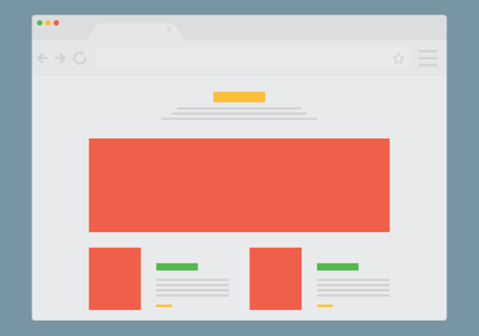
The need for User Experience designers is growing, and so even self-taught professionals can be attractive candidates for employers in need. And these people can come from a variety of backgrounds, according to Nick Finck, the self-taught director of UX Design at Seattle-based Deloitte Digital. He's added 24 people to his staff over the last few years. “UX is essentially an umbrella term used to describe individuals who wear different hats,” says Finck. “You need to look at the skills — not the job title — to find a position and career path that interests you.” In design, each position requires a different combination of creativity, graphic design, architecture, research and analytics, as well as knowledge of human factors and psychology. Many UX specialists have jumped in from Web design and development, mobile development, information architecture, marketing, e-commerce, social media and technical communications, but even librarians and anthropologists have also moved into the field. Some are classified as experts, some contribute to an Agile or Scrum team. If they design and develop Web sites and mobile apps for small companies, UX is another of the competencies they'll need. While some colleges and universities are adding courses and developing graduate programs, it's still realistic to leverage your current degree to get into the field. UX Designers are primarily responsible for:
- Researching the competitive landscape and user behaviors, then making recommendations relating to website functionality.
- Creating user-flow wireframes and prototypes for both new and revamped screens, mocking up their wireframes and testing them.
- Owning the design and the user interface, as well as being a user advocate.
- Selling designs and solutions to stakeholders.
- Delivering and monitoring results.
Two critical needs are to be observant and empathic, says to Jim Ross, principal of Philadelphia-based Design Research at Electronic Ink, located in Philadelphia, and a columnist for the website UXmatters. The designer's goal is to uncover covert and overt user behaviors and preferences, and use creative designs and architecture to garner users' attention. “Some jobs are more creative, some more analytical,” observes to Dr. Carol Barnum, director and co-founder of the Usability Center at Southern Polytechnic State University, located in Marietta, Ga. “As long as you have the skills, you can make a seat for yourself at the table.” So how do you claim a seat?
Step 1: Pick a path
Again, don’t look at job titles and don’t be put off by job postings that request a Ph.D. and years of experience. Read job descriptions, books and articles, participate in discussion forums and attend conferences to uncover the responsibilities that appeal to you.
Step 2: Learn the Tools
Essentially, you need to be familiar with at least one tool in each category and understand basics like SEO and Google Analytics. We’ve provided links to lists of free UX tools below.
Step 3: Build a portfolio
A portfolio of work is a plus, says Finck, because it will help you explain the rationale behind your decisions to walk prospective employers through your methodology.
Related Links
 The need for User Experience designers is growing, and so even self-taught professionals can be attractive candidates for employers in need. And these people can come from a variety of backgrounds, according to Nick Finck, the self-taught director of UX Design at Seattle-based Deloitte Digital. He's added 24 people to his staff over the last few years. “UX is essentially an umbrella term used to describe individuals who wear different hats,” says Finck. “You need to look at the skills — not the job title — to find a position and career path that interests you.” In design, each position requires a different combination of creativity, graphic design, architecture, research and analytics, as well as knowledge of human factors and psychology. Many UX specialists have jumped in from Web design and development, mobile development, information architecture, marketing, e-commerce, social media and technical communications, but even librarians and anthropologists have also moved into the field. Some are classified as experts, some contribute to an Agile or Scrum team. If they design and develop Web sites and mobile apps for small companies, UX is another of the competencies they'll need. While some colleges and universities are adding courses and developing graduate programs, it's still realistic to leverage your current degree to get into the field. UX Designers are primarily responsible for:
The need for User Experience designers is growing, and so even self-taught professionals can be attractive candidates for employers in need. And these people can come from a variety of backgrounds, according to Nick Finck, the self-taught director of UX Design at Seattle-based Deloitte Digital. He's added 24 people to his staff over the last few years. “UX is essentially an umbrella term used to describe individuals who wear different hats,” says Finck. “You need to look at the skills — not the job title — to find a position and career path that interests you.” In design, each position requires a different combination of creativity, graphic design, architecture, research and analytics, as well as knowledge of human factors and psychology. Many UX specialists have jumped in from Web design and development, mobile development, information architecture, marketing, e-commerce, social media and technical communications, but even librarians and anthropologists have also moved into the field. Some are classified as experts, some contribute to an Agile or Scrum team. If they design and develop Web sites and mobile apps for small companies, UX is another of the competencies they'll need. While some colleges and universities are adding courses and developing graduate programs, it's still realistic to leverage your current degree to get into the field. UX Designers are primarily responsible for:



